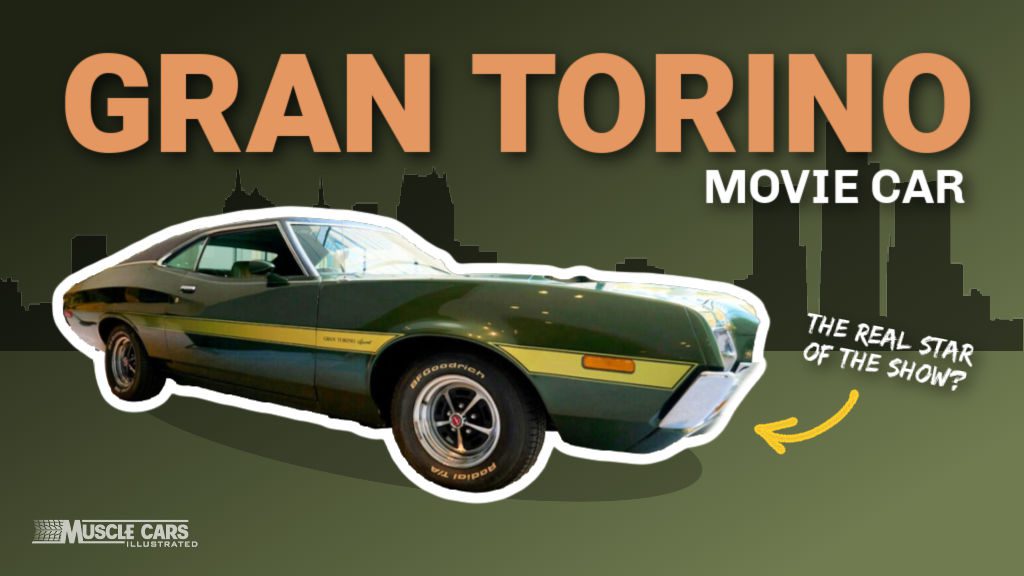
A Gran Torino car roars to life in Clint Eastwood’s riveting 2008 drama, “Gran Torino,” which raked in a staggering $270 million.
Eastwood masterfully takes on the role of Walt Kowalski, a gruff Korean War veteran who strikes an unexpected bond with his Hmong neighbors in Highland Park, Detroit.
This powerful automobile is more than just a mode of transportation; it becomes a symbol of American culture and masculinity, weaving a tale that connects the audience to the protagonist’s values and an intriguing backstory.
This movie muscle car has reached legendary status right up there with John Wick’s Mustang, The Vanishing Point Challenger, and the Dazed and Confused cars.
Dive into this article to uncover the captivating history and significance of the 1972 Gran Torino as we explore its unforgettable role in the movie and its indelible mark on popular culture.
Table of Contents
History of the 1972 Gran Torino
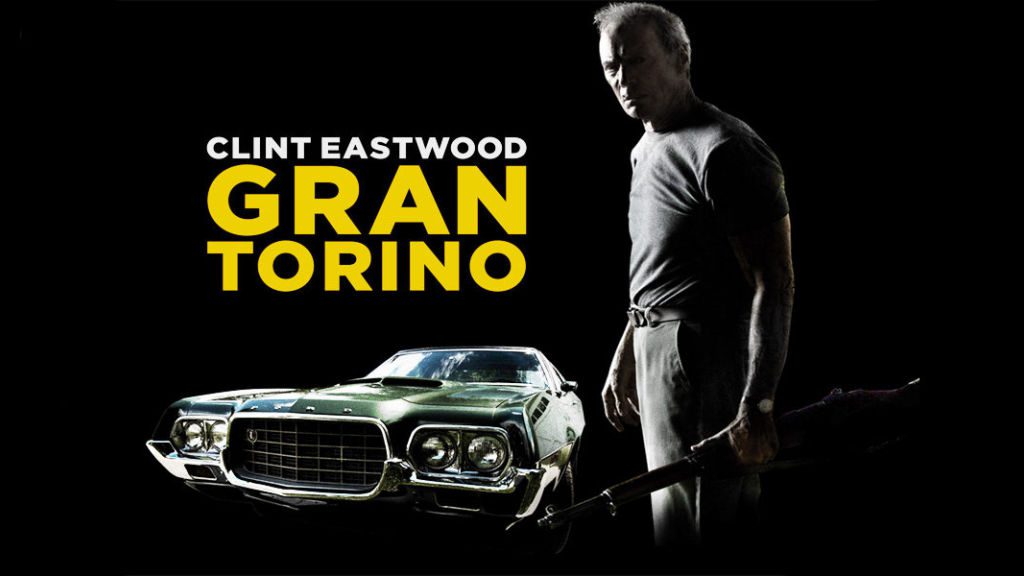
From 1968 to 1976, Ford’s Torino lineup featured the Gran Torino, a mid-sized marvel that captured the hearts of car enthusiasts.
The 1972 Gran Torino, a striking second-generation model, transformed the automotive landscape with its sleek, streamlined body, elongated wheelbase, and imposing stance—radiating an aura of raw power and aggression.
In 1972, Ford honed in on the Torino, reimagining it into three distinct trim levels: the classic Torino, the commanding Gran Torino, and the sporty Gran Torino Sport.
The semi-sloping Gran Torino Sport was a sales juggernaut, with an astounding 56,819 units flying off the lots.
Yet, a rare breed emerged—only 3,939 of these beauties were convertibles, making them a coveted collector’s dream.
| Attribute | Details |
|---|---|
| Base Price | $2,822 (1972 base model) |
| Number Built | 56,819 |
| Curb Weight | 3,150-3,850 lbs (approximate) |
| Wheelbase | 114 inches |
| Body Length | 206.2 inches |
Under the visionary guidance of Bill Shenk, Ford’s designers set out on a mission to craft a car that resonated with younger drivers and captured the essence of America’s dynamic automotive culture in the early 1970s.
Drawing inspiration from the Italian city of Turin—the “Detroit of Italy” and a powerhouse in the auto industry—the “Gran Torino” was born.
1972 Gran Torino Highlights
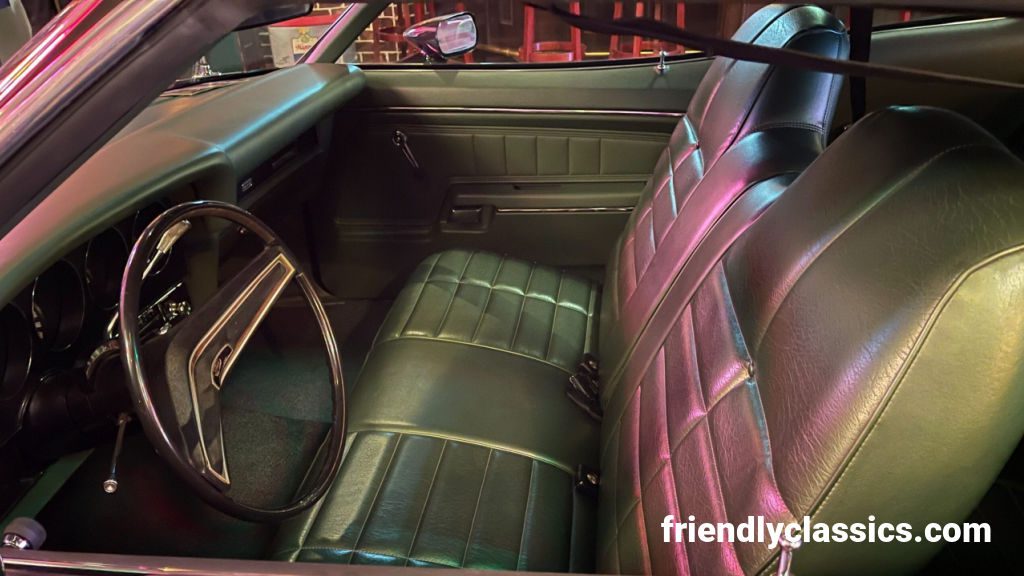
| Highlights | Specifications |
|---|---|
| Body Style | Two-door “Sports Roof” hardtop |
| Engine Options | 351-cubic-inch Cleveland V8 or 429-cubic-inch Cobra Jet V8 |
| Transmission Options | Three-speed manual (standard), four-speed manual, or three-speed automatic |
| Suspension System | Comfortable ride with easy handling |
| Braking System | Power brakes, optional front disc brakes |
| Popular Trim Level | Gran Torino Sport |
| Design Features | Streamlined body, longer wheelbase, wider stance |
| Wheels | Magnum 500 |
| Production Years | 1968-1976 (Second generation: 1972) |
The 1972 Gran Torino’s captivating appeal stemmed from its diverse range of body styles, encompassing a two-door hardtop, a four-door sedan, and a versatile station wagon.
Among these, the Gran Torino Sport reigned supreme, boasting bucket seats, a sleek instrument panel, and a duo of high-performance engines to quench any speed enthusiast’s thirst.
Engine Specs
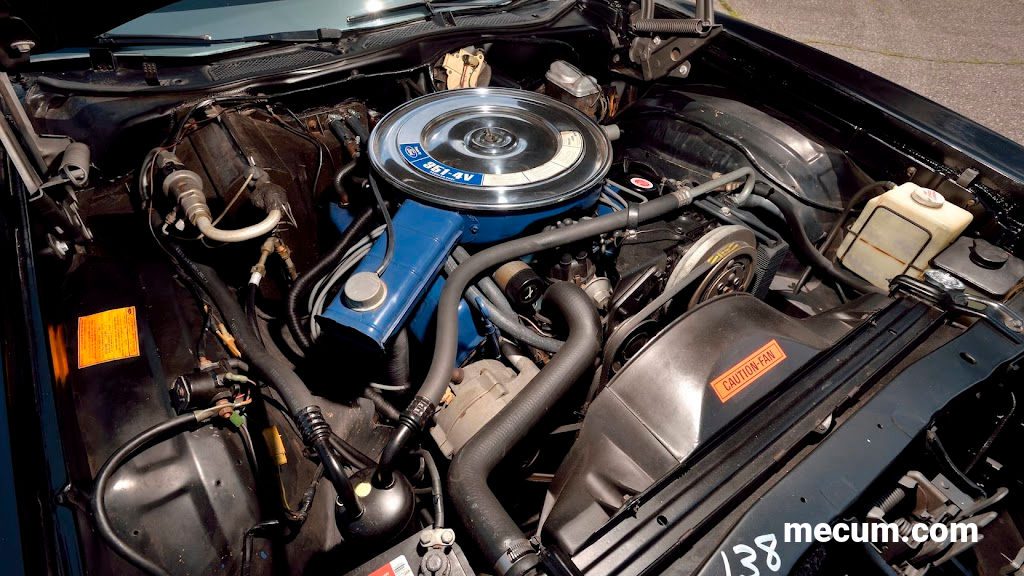
| 302 V8 | 351 Cleveland V8 | 351 Cobra Jet V8 | 400 V8 | 429 V8 | |
|---|---|---|---|---|---|
| Displacement | 302 | 351 | 351 | 400 | 429 |
| Horsepower | 140 hp | 161 hp | 266 hp | 172 hp | 205 hp |
| Torque | 239 lb-ft | 254 lb-ft | 310 lb-ft | 298 lb-ft | 322 lb-ft |
| Carburetor | 2-barrel | 2-barrel | 4-barrel | 2-barrel | 4-barrel |
| Compression Ratio | 8.5:1 | 8.6:1 | 8.6:1 | 8.5:1 | 8.5:1 |
With a standard three-speed manual transmission, the Gran Torino left room for customization, offering a four-speed manual or a three-speed automatic for those who craved variety.
The car’s suspension system delivered a luxuriously smooth ride, while power steering, power brakes, and an optional front disc brake system provided effortless handling and unparalleled stopping prowess.
Significance of the 1972 Gran Torino in the Movie
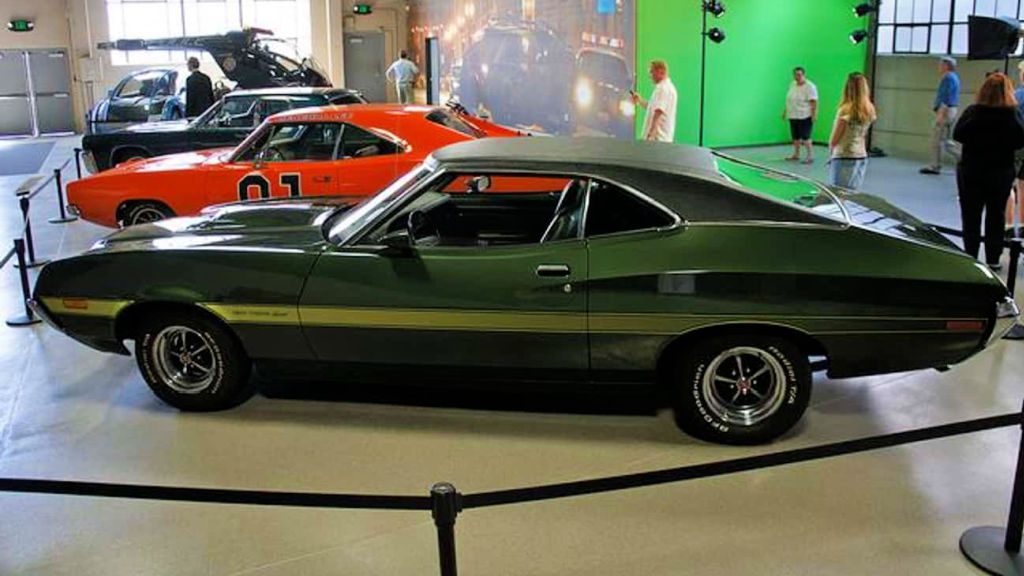
In “Gran Torino,” the 1972 Gran Torino Sport is a potent symbol of American culture and masculinity—a testament to a time when American automobiles were revered for their power, style, and quality.
This iconic vehicle encapsulates the American dream as it emerged from an era of automotive optimism and innovation.
Walt Kowalski’s unwavering attachment to the Gran Torino reflects his pride in his Ford career and his steadfast adherence to traditional American values.
The car’s muscular design and robust engine mirror Walt’s own rugged exterior, making the Gran Torino a natural extension of his persona.
As a retired Ford assembly line worker who painstakingly crafted the Gran Torino with his own hands, the car serves as an enduring emblem of Walt’s identity.
It symbolizes his connection to the past and the tireless work ethic that defined his life.
| Specs | Details |
|---|---|
| Year | 1972 Ford Gran Torino |
| Engine | 351 cubic inch Cobra Jet |
| Horsepower | 266 hp |
| Transmission | 3-speed automatic |
| Exterior Paint Color | Dark Green with black vinyl top |
| Interior Color | Green |
| Type of Wheels | Magnum 500 |
The Gran Torino car fuels Walt’s interactions with his Hmong neighbors, who admire and respect the vehicle.
As Walt and young Thao forge a bond, the car symbolizes mutual understanding and shared experiences.
Ultimately, the Gran Torino plays a pivotal role in Walt’s decision to aid Thao and his family as he passes on his values and legacy to the next generation.
At the heart of the movie’s plot, the Gran Torino car ignites tension between Walt and the local gang members.
When the gang pressures Thao to steal the car, a chain of events unravels, leading to Walt’s personal metamorphosis and the story’s ultimate resolution.
The Gran Torino car also underscores the film’s redemption themes and human connection’s transformative power.
As Walt’s relationship with his Hmong neighbors blossoms, the car emerges as a shared passion that transcends generational and cultural divides, mending the scars of the past and illuminating a path to a brighter future.

Get The Top 50 Fastest Muscle Cars chart. Includes year, model, engine, 1/4 mile times, and more—absolutely free!
Legacy of the 1972 Gran Torino
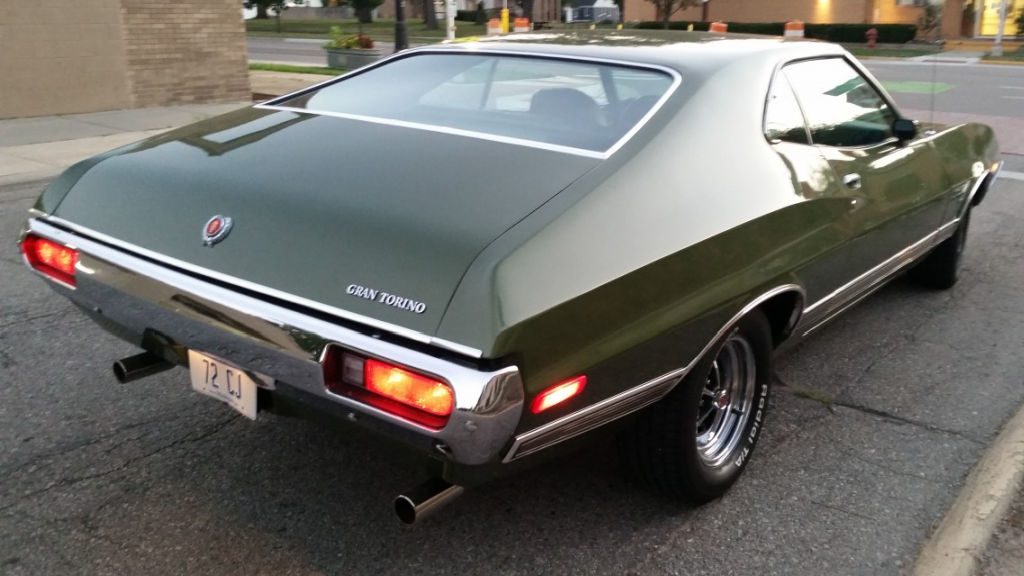
The 1972 Gran Torino Sport has revved its way into the hearts of car enthusiasts and collectors alike, with its popularity skyrocketing following the release of the 2008 movie “Gran Torino.”
Admired for its aggressive design, robust engine options, and prominent role in American automotive history, the Gran Torino symbolizes American pride, craftsmanship, and resilience.
The car’s influence ripples far beyond the movie screen. The Gran Torino has solidified its legacy as a cultural icon across various media platforms, from television shows and music videos to video games.
The Gran Torino occupies a unique position in Ford’s storied history, epitomizing a pivotal moment in the company’s design philosophy and market strategy.
The car’s success fortified Ford’s standing as a dominant force in the automotive industry throughout the 1970s and has since become a cherished chapter in the brand’s heritage.
The unrelenting popularity of the 1972 Gran Torino continues to shape Ford’s image as a manufacturer of iconic, powerful vehicles, contributing to the company’s enduring reputation for decades to come.
Original Gran Torino Owner Reunites with Beloved Car
Dave Beckett, from Monett, Missouri, watched the movie Gran Torino and realized that the car featured in the film was his own first car, a 1972 Gran Torino Sport.
He contacted the previous owner, Jim Craig, who confirmed the car’s history. Although the car had a green vinyl top when Beckett owned it, Craig restored it with a black top.
After discovering the car’s whereabouts, Beckett spent time alone with it at the Warner Bros Studios car museum and was happy that the car had been retained for future generations to enjoy.
The key that Beckett had kept all those years still worked, bringing back a flood of memories for him when he reunited with his beloved Gran Torino car.
Related Questions
Following the completion of filming, Eastwood acquired the movie for his own personal collection. However, it is currently displayed at California’s Warner Bros Studios Picture Car Museum.
The car used in the movie is a 1972 Ford Gran Torino Sport.
According to Hagerty, the value of a 1972 Ford Gran Torino Sport with a 351 Cobra Jet can vary. Generally, a well-maintained, original, and unrestored 1972 Ford Gran Torino Sport could be worth anywhere from $13,000 to $30,000, while a fully Concours restored example could fetch upwards of $40,000.
Conclusion
The 1972 Gran Torino car occupies a revered spot in automotive history and popular culture due in no small part to its starring role in the movie “Gran Torino.”
The car’s symbolism, encapsulating American culture, masculinity, and craftsmanship, is intricately woven into the film’s narrative and themes.
The 1972 Gran Torino car will forever stand as an iconic testament to American automotive excellence, serving as a poignant reminder of the power of human connection in triumphing over adversity.

Ryan Wheaton
Ryan has owned muscle cars since 1986 and currently owns a 1972 Dodge Charger Rallye. He combines passion and experience to create engaging content for fellow muscle car enthusiasts. In 2018, he founded Muscle Cars Illustrated, authoring hundreds of articles on tips, history, and trends in the muscle car industry. He attends national car shows, auctions, and museums to stay current with the latest developments in the muscle car industry.
